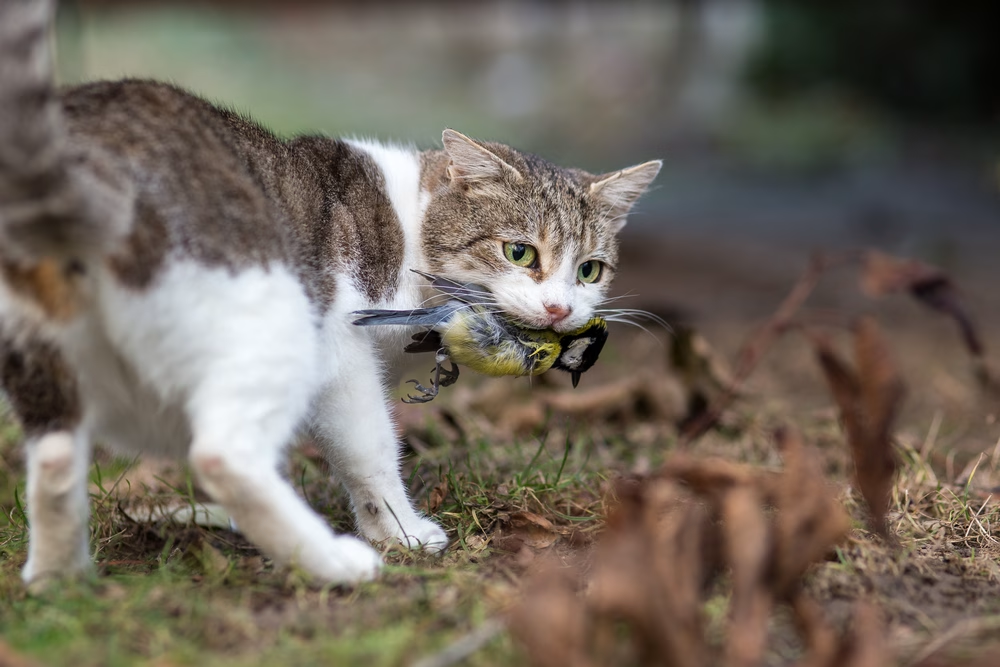On July 26th 2018, the Victorian Government officially declared feral cats to be a pest species on public land. This means that trapping, baiting and possibly bounties can be put into place in order to manage feral cat populations. It’s thought that Australia’s feral cat population first began establishing itself in the 17th century as a result of Dutch exploration. At certain points in history, cats have even been released into the wild by farmers in a bid to control mice and other rodents. However, the major spread of feral cats in Australia occurred in the 20th century as domestic pet cats were allowed to roam and breed. We have often talked about the importance of de-sexing your cat from a health and wellbeing perspective but in article, we take a look at the link between de-sexing your cat, and doing your part to help manage Australia’s feral cat population.

How un-desexed cats can go from fluffy to feral in three key phases
Of course, your tummy rub loving cat doesn’t transform overnight from a beloved family pet to a highly aggressive, 15kg predator, but there is a direct link between the two, and it doesn’t take more than a few generations for your cat’s descendants to go from domestic to feral.
Domestic
Your pet cat is entirely dependent on you for survival and their lifestyle shows it. When properly cared for, a domestic cat has very little impact on the environment and the wider community. Veterinary care ensures they are free from all common feline diseases, have a minimal impact on the local wildlife (by being kept inside at night), are entirely dependent on humans for food, and stay close to home with a territory size between 230 (for female cats) and 500 meters (for male cats). The problem comes when owners fail to de-sex their domestic cats. Animals that have not been de-sexed tend to roam much further, driven by the desire to look for a mate. When this happens, cats often lose their bearings and are unable to find their way home, becoming lost. RSPCA statistics suggest that 9/10 cats which go missing are never reunited with their owners.
Unowned/semi domestic/semi feral
Cats which have become lost or are abandoned enter a state known as ‘unowned’, ‘semi feral’ or ‘semi domestic’. These animals and their immediate offspring are still reliant on humans for their food and shelter but have a much lower quality of life than a domestic cat. They live in large colonies in urban fringe areas such as rubbish dumps and around factories and rely on scavenging or occasional feeds from well-meaning members of the public. As these animals receive no veterinary care, they often suffer from common (and preventable) feline diseases and parasites. Provided there is food around, they will continue to breed and when left unchecked, feline populations can grow at an astonishing rate.
Feral
Around 130,000 unowned cats end up in Australian shelters every year, and over 100,000 of these are then euthanized. The remaining half a million unowned cats that survive into adulthood every year continue breeding and eventually become feral. Feral cats are wild animals which are self-sufficient and survive by hunting or scavenging. In Australia, it’s estimated that there are 0.7 feral cats per square kilometer of land.
Feral Cat Facts
- Feral cats can have 2-3 litters per year
- It takes 6 months for feral kittens to become experienced hunters
- Remarkably adaptable, feral cats are present on >>99.8% of Australia’s land area
- Feral cats live for 2-7 years
- Feral cats carry a wide range of diseases and parasite which can be passed onto wildlife, humans and other domestic animals
- Feral cats have a low quality of life with leading causes of death being other cats and disease
Economic Impact
- The Australian Government spends $2 million dollars per year on feral cat management and research
- Feral cats cost inflict economic loss of around $144 million per year through bird predation alone
Ecological impact
- 80 endangered and threatened Australian animals are at risk of feral cat predation
- Feral cats have been implicated in the extinction of 20 Australian mammal species and sub species including the lesser bilby and the desert bandicoot
- Feral cats are estimated to kill 75 million animals every night in Australia
- Feral cats kill around 272 million birds per year or 2-3% of Australia’s bird total population
De-sexing is not just an important part of being a responsible cat owner, it plays a crucial role in protecting Australia’s unique and vulnerable ecosystems. Vets on Balwyn offer onsite de-sexing day procedures and we strongly advise that every cat is de-sexed once they are 5-6 months old. Book a consultation online or give us a call on (03) 9857 8100 to learn more.


